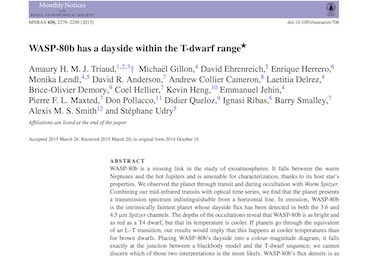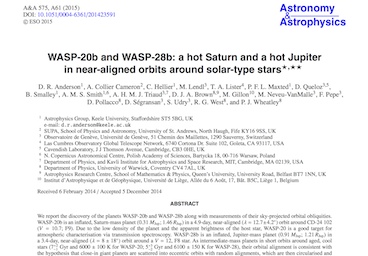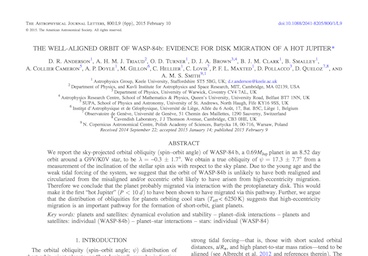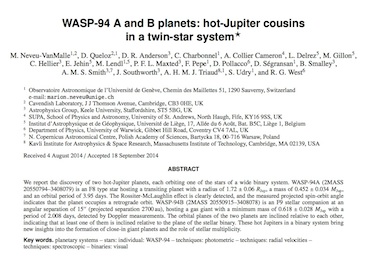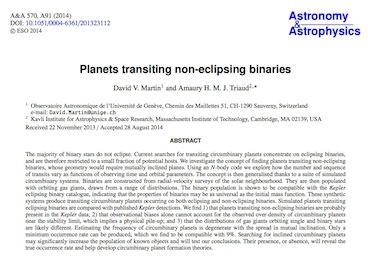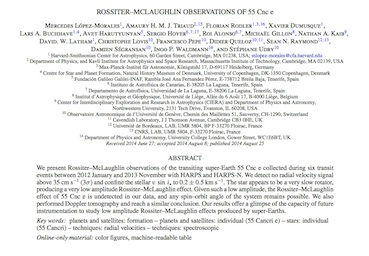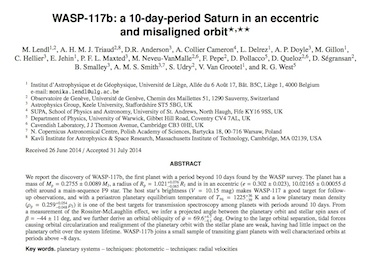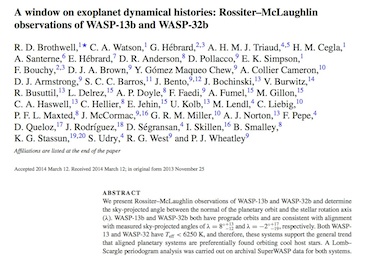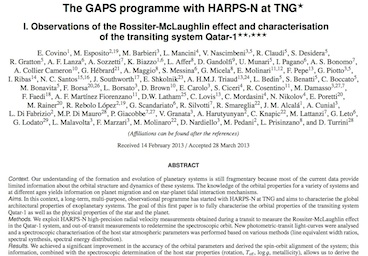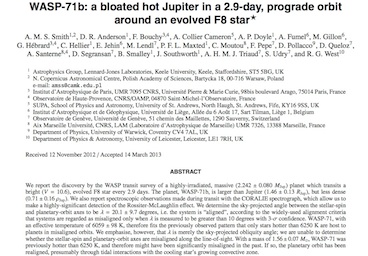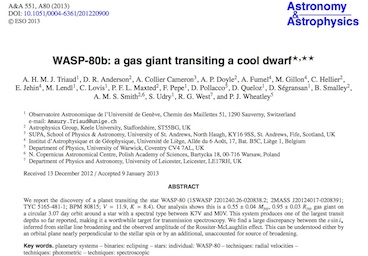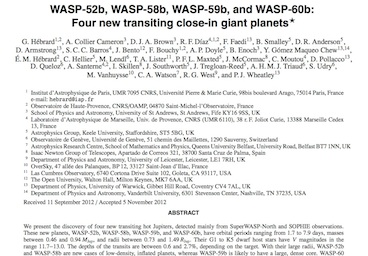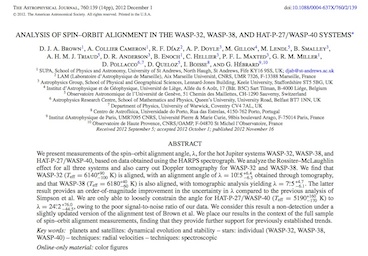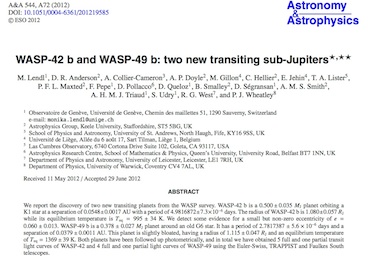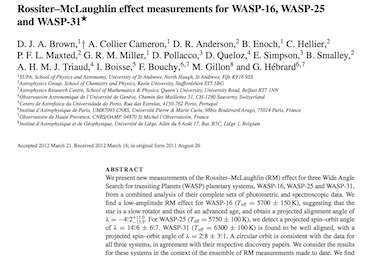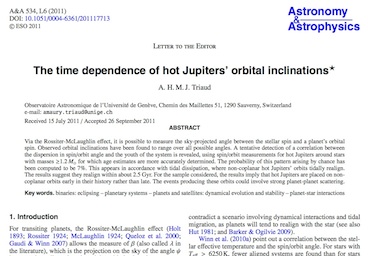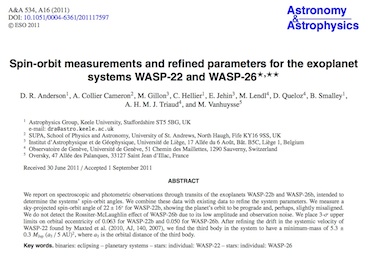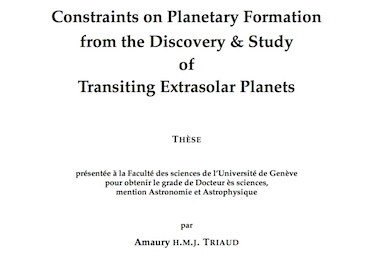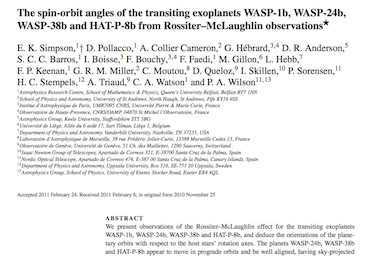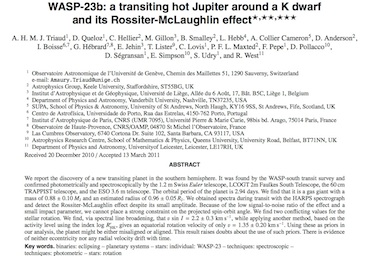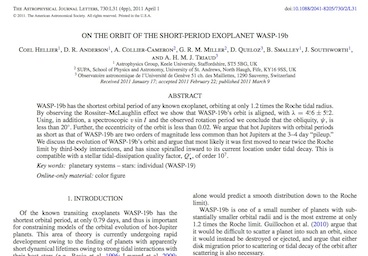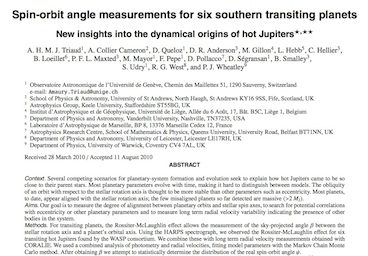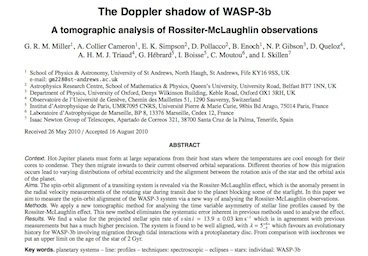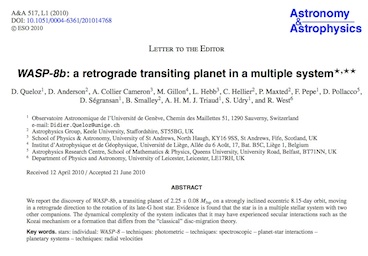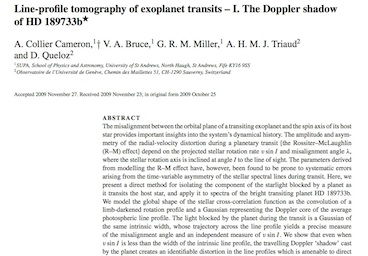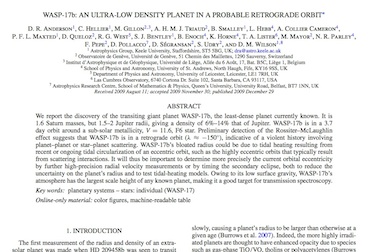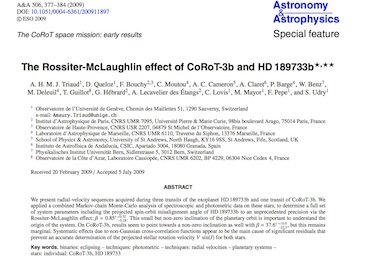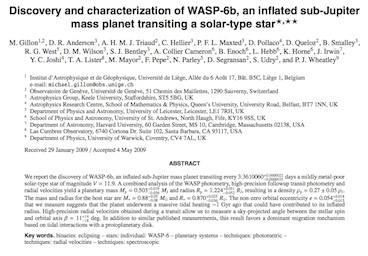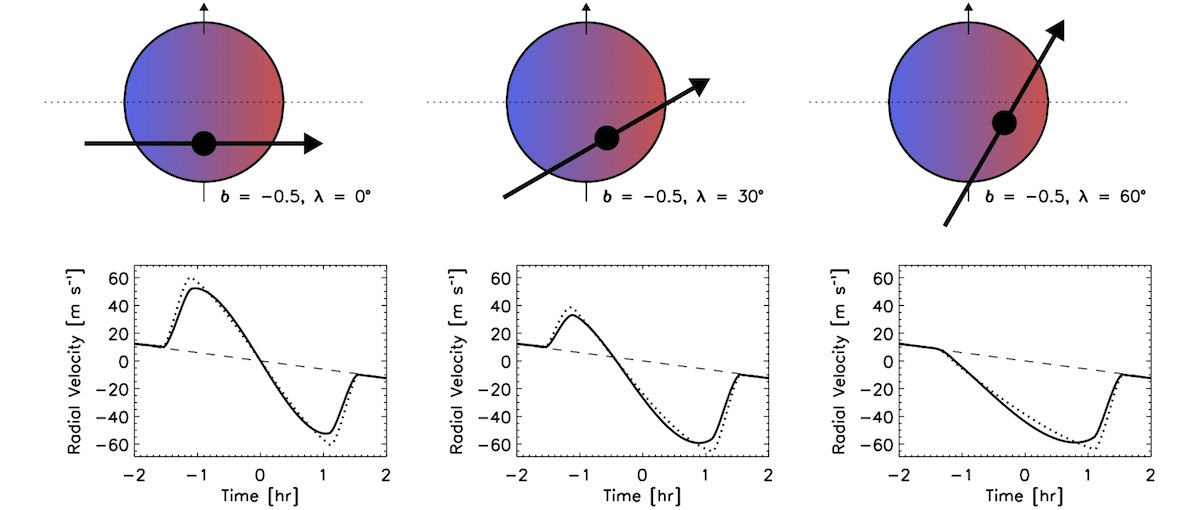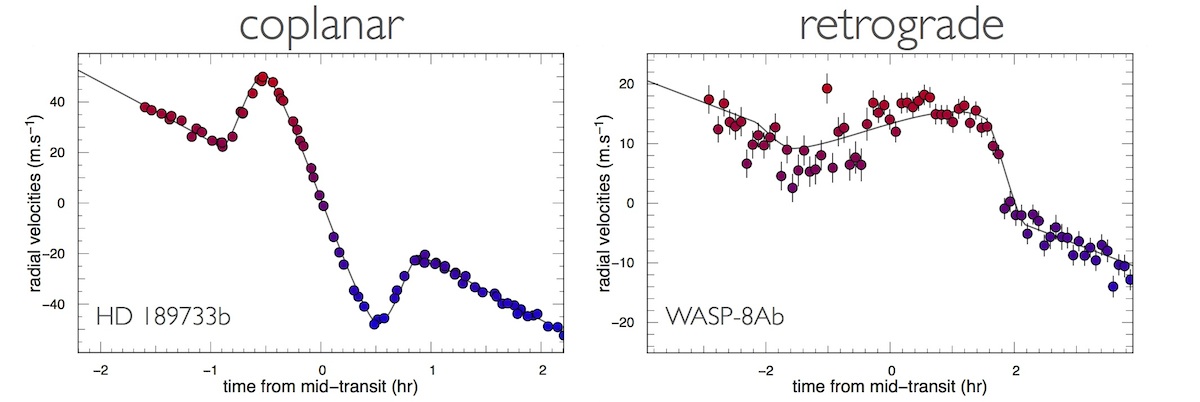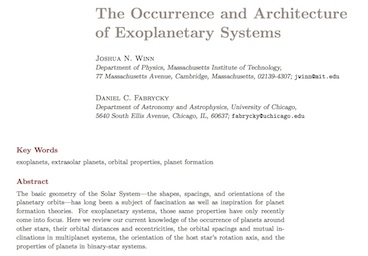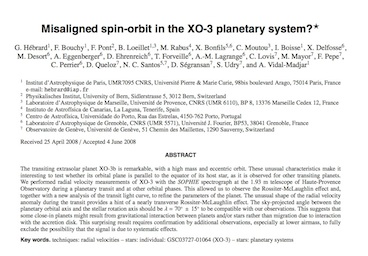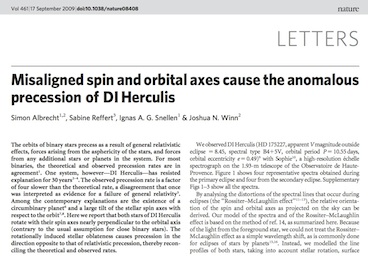
in the Solar system, all planets share the same plane
Our observations, and those of other investigators, show that for exoplanets this is not the case; planets can occupy any orbital plane. Several explanations are given; most are linked to events happening during their formation, or shortly after. Studying orbital inclinations is to investigate those early conditions.
The Solar system is extremely flat. All planets approximately share the same orbital plane. This laid the foundations of the theory stipulating that planet form within a primordial disc of material. When hot Jupiters were first discovered, their surprising presence so close to their star (where they physically cannot form) was explained by interactions between the planet and this disc. Measurements of orbital inclinations, for hot Jupiters, have shown that many of them occupy orbital planes in a random orientation with respect to the equator of their host star. Although not the only explanation, this strongly points toward important dynamical processes happening after the planets have formed. Current work now focuses on orbital periods longer than the hot Jupiters typically occupy, and towards planets of lower masses. In addition significant advances are being made by studying multi-planetary systems and measuring whether all planets share a same orbital inclination, or whether they are mutually inclined. The study of the hot Jupiters' orbital inclination carries on, to complement what is already known, but also to study the impact of tides, raised between the planet and the star, which change as the star evolves. This becomes an unthought-for test for the physics of stellar evolution.
